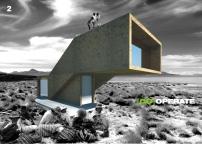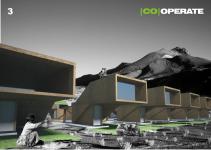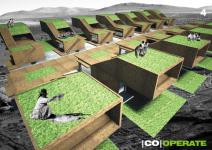(CO)OPERATE= (productive community + architecture)
(CO)OPERATE opens the possibility of generating optimal community production alternatives to be developed under very difficult conditions through the use of architecture as a social instrument of productive development; in this specific case, the development of farming communities from the Bolivian altiplano.
Inequality, poor access to basic services and adequate quality of life, the exploitation of natural resources in the region, generation of productive employment by enhancing the productive specialties of local people. The difficulties of agricultural production, unfavorable buildings focused for such aim, etc., are some of the problems we face also understood as premises that form the starting point and also shape and define the context in which the problems and the project coexist and are deployed together.
Given this reality, the main question that we have is: How can architecture generate precise responses to such contrasted needs as in the case of the Bolivian altiplano, where populations full of indigenous people lack of basic services, minimum conditions of habitability in their constructions, where many communities are socially and economically fully dispersed and for this reason unable to find a horizon of development suited to their conditions?
The (Co)operate project aims to generate new urban establishments which aim precisely to promote exchanges and activities of each region, revitalizing the community coexistence, and stimulating by means of agricultural production the economic development that in this case goes hand in hand with the use of natural resources and their environmental management and awareness.
Each unit, in addition to housing, has a growing area located in two specific sites: The first is located on ground floor and would be aimed to the promotion of agricultural vegetables or tubers that show a minor degree of adversity in their growth and evolution and that are more favorable to the climate and specific conditions to the site. The second is in the highest parts of the houses (ceilings) which present a more developed land, which contains products that are not favorable for the cultivation in these areas and require more care and treatment.
The provisions of the aforementioned areas of production provide not only products that future families will be able to market but would also be used for domestic consumption.
The disposition of housing units may be arranged in an isolate way or generating, as seen on some images, new groups increasing the possibility of community organization and participation.
(Co)operate, without claiming to give full and final solution to these problems, raises the possibility that through the architecture, the most neglected and poorest communities may have not only housing alternatives but also development based on the activities in which they are experts, in this case agriculture.
2009
2009
.jpg)
.jpg)



.jpg)
